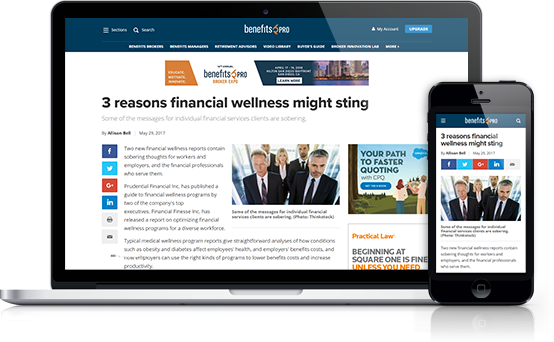 Benefits professionals understand that increasing pressures to improve access while containing costs, combined with advancements in data and medical technologies, continue to drive the evolution of the health care industry. Though the jury is still out on the long-term impact of many technologies, one on which all parties agree is including virtual care as part of any comprehensive health care program.
Benefits professionals understand that increasing pressures to improve access while containing costs, combined with advancements in data and medical technologies, continue to drive the evolution of the health care industry. Though the jury is still out on the long-term impact of many technologies, one on which all parties agree is including virtual care as part of any comprehensive health care program.
Given that, it's crucial to have a clear picture of the many ways virtual care will likely continue its transformation of health care delivery in 2020:
- Virtual care becomes a top priority for large employers and health systems
The importance of virtual care is increasing for nearly all U.S. health plans, and the majority are offering or considering services. Building off the virtual care programs almost all large employers currently offer, 51 percent say that expanding virtual care options to their employees is a top priority in 2020. Sixty-four percent of U.S. hospitals and health systems now offer consumer virtual care programs, and an additional 24 percent plan to provide consumer telemedicine by year's end.
- Consumers will increasingly demand integrated, personalized care on their terms.
Thanks to digital and "big data" technologies built around gaining consumer insights and customization, choice abounds in terms of where individuals turn to access products and services. As a result, both plan sponsors and consumers increasingly expect personalization and demand more control when it comes to quality health care, as well. Virtual care enables people to get the right treatment at the right time for resolution of their needs. As a result, utilization and advocacy are accelerating.
For plan or benefits administrators facing pushback from leadership or employees, a good selling point for virtual care is that customer satisfaction among users of telehealth services ranks among the highest of any consumer category, according to J.D. Power.
- Virtual care will help close the access gap for mental health care
Mental illness, particularly anxiety and depression, is the leading chronic condition today. It affects more Americans than cardiovascular diseases, cancer, respiratory diseases, and diabetes.
Recommended For You
Complete your profile to continue reading and get FREE access to BenefitsPRO, part of your ALM digital membership.
Your access to unlimited BenefitsPRO content isn’t changing.
Once you are an ALM digital member, you’ll receive:
- Breaking benefits news and analysis, on-site and via our newsletters and custom alerts
- Educational webcasts, white papers, and ebooks from industry thought leaders
- Critical converage of the property casualty insurance and financial advisory markets on our other ALM sites, PropertyCasualty360 and ThinkAdvisor
Already have an account? Sign In Now
© 2025 ALM Global, LLC, All Rights Reserved. Request academic re-use from www.copyright.com. All other uses, submit a request to [email protected]. For more information visit Asset & Logo Licensing.








